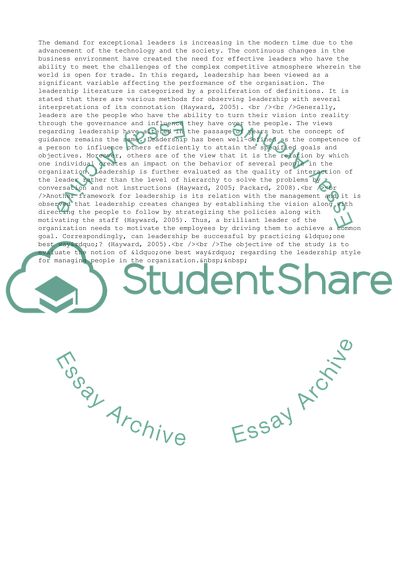Cite this document
(To What Extent Does Leadership Research Support the Idea That There Is Coursework Example | Topics and Well Written Essays - 2250 words, n.d.)
To What Extent Does Leadership Research Support the Idea That There Is Coursework Example | Topics and Well Written Essays - 2250 words. https://studentshare.org/management/1811212-to-what-extent-does-leadership-research-support-the-idea-that-there-is-one-best-way-to-lead-people-in-organisations
To What Extent Does Leadership Research Support the Idea That There Is Coursework Example | Topics and Well Written Essays - 2250 words. https://studentshare.org/management/1811212-to-what-extent-does-leadership-research-support-the-idea-that-there-is-one-best-way-to-lead-people-in-organisations
(To What Extent Does Leadership Research Support the Idea That There Is Coursework Example | Topics and Well Written Essays - 2250 Words)
To What Extent Does Leadership Research Support the Idea That There Is Coursework Example | Topics and Well Written Essays - 2250 Words. https://studentshare.org/management/1811212-to-what-extent-does-leadership-research-support-the-idea-that-there-is-one-best-way-to-lead-people-in-organisations.
To What Extent Does Leadership Research Support the Idea That There Is Coursework Example | Topics and Well Written Essays - 2250 Words. https://studentshare.org/management/1811212-to-what-extent-does-leadership-research-support-the-idea-that-there-is-one-best-way-to-lead-people-in-organisations.
“To What Extent Does Leadership Research Support the Idea That There Is Coursework Example | Topics and Well Written Essays - 2250 Words”. https://studentshare.org/management/1811212-to-what-extent-does-leadership-research-support-the-idea-that-there-is-one-best-way-to-lead-people-in-organisations.


